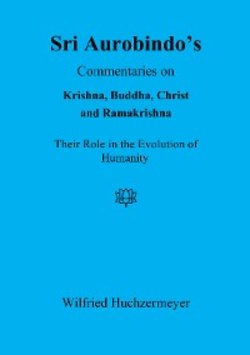Читать книгу Sri Aurobindo's Commentaries on Krishna, Buddha, Christ and Ramakrishna - Wilfried Huchzermeyer - Страница 5
Preface
ОглавлениеThere are numerous passages in Sri Aurobindo’s works in which he mentions in one breath Krishna, Buddha and Christ. Thus, in The Synthesis of Yoga for instance, he points out that our search for the Divine calls for an intermediary who is close to our own humanity and perceptible as a human influence and example. “This call is satisfied by the Divine manifest in a human appearance, the Incarnation, the Avatar – Krishna, Christ, Buddha.”[1] Furthermore, in a letter to a disciple he writes that the Avatar is someone who comes to open the way for humanity to a higher consciousness, and it must be a passable way, otherwise the whole concept “which is also that of Christ and Krishna and Buddha”, would be wrong or the whole life and action of the Avatar would be futile.[2] Apart from these three names, Ramakrishna too is called “Avatar” by Sri Aurobindo in a few passages and needs to be included in this study about the most powerful spiritual influences of the past.[3]
Sri Aurobindo’s commentaries on all of them indicate that he saw them as great personalities and messengers who came to earth with a special mission in order to support and speed up the evolution of humanity in one or another way. That is to say he looks at them from the viewpoint of his own evolutionary philosophy and his conviction that a life divine on earth is the highest destiny of humanity. Even though the Avatars may not have pursued this same goal, through their strong aura and radiance they have achieved some progress which is indispensable as a preliminary stage of his own objective of a supramental manifestation.
Thus, his interpretation of the life and work of the Avatars of the past is part of his integral worldview, in which manifold spiritual and cultural contributions of different periods and areas coalesce into a meaningful whole. On the basis of his evolutionary optimism, he delineates in his commentaries the Great Impulses which the divine messengers brought into the lives of humans. But again and again he also refers to developments in the respective later religions which he considers as unwholesome and which from his viewpoint were not intended by their “founders”, as we call them today. Moreover, in a few cases he also concedes that he does not agree with a particular approach or idea.
In his vision, it is part of the cosmic multiplicity if spiritual teachers come with their own particular mission in accordance with the need of the region and epoch. Once in a letter to a disciple he pleaded for leaving “each manifestation to its own inner world for those to follow who have an inner drawing to the one or the other.”[4] Thus, with his liberal mind he avoided getting drawn into any kind of sectarian narrowness. Closely following his commentaries, we realize that his ultimate purpose is to reveal the original, unifying Vedantic truth behind the Avatars’ messages.
This study presupposes a basic knowledge of Sri Aurobindo’s thought and terminology; we do not explain or discuss terms such as “supermind” or “transformation”. All the references are, if not otherwise stated, to the Complete Works of Sri Aurobindo (CWSA) and, in the Mother’s case, to the Collected Works of the Mother (CWM).[5] Our thanks are due to all those who made valuable suggestions for the book or helped with the editing and proof-reading.
Wilfried Huchzermeyer
[1] The Synthesis of Yoga, 65
[2] Letters on Yoga I, 476
[3] It is to be noted that Sri Aurobindo uses the term “Avatar” much more sparsely than is generally the case today.
[4] Letters on Yoga II, 505
[5] See Literature
